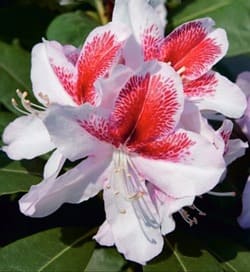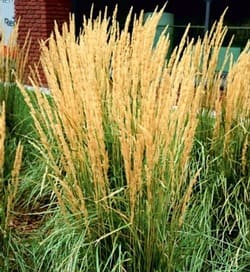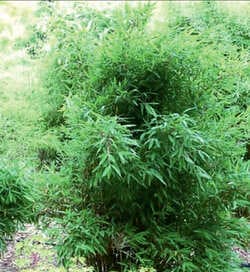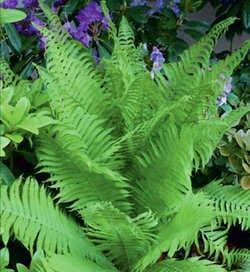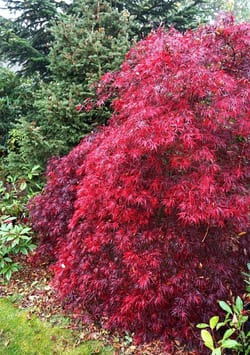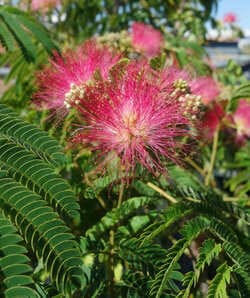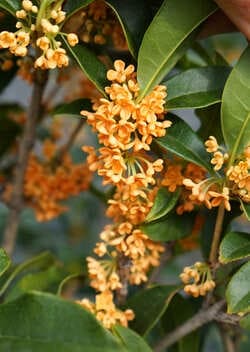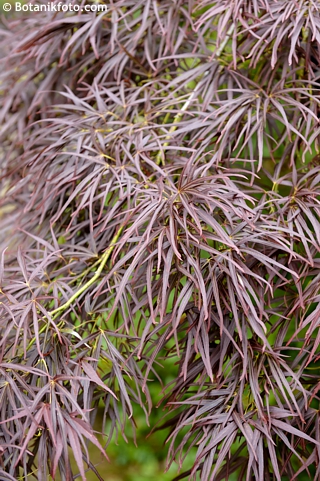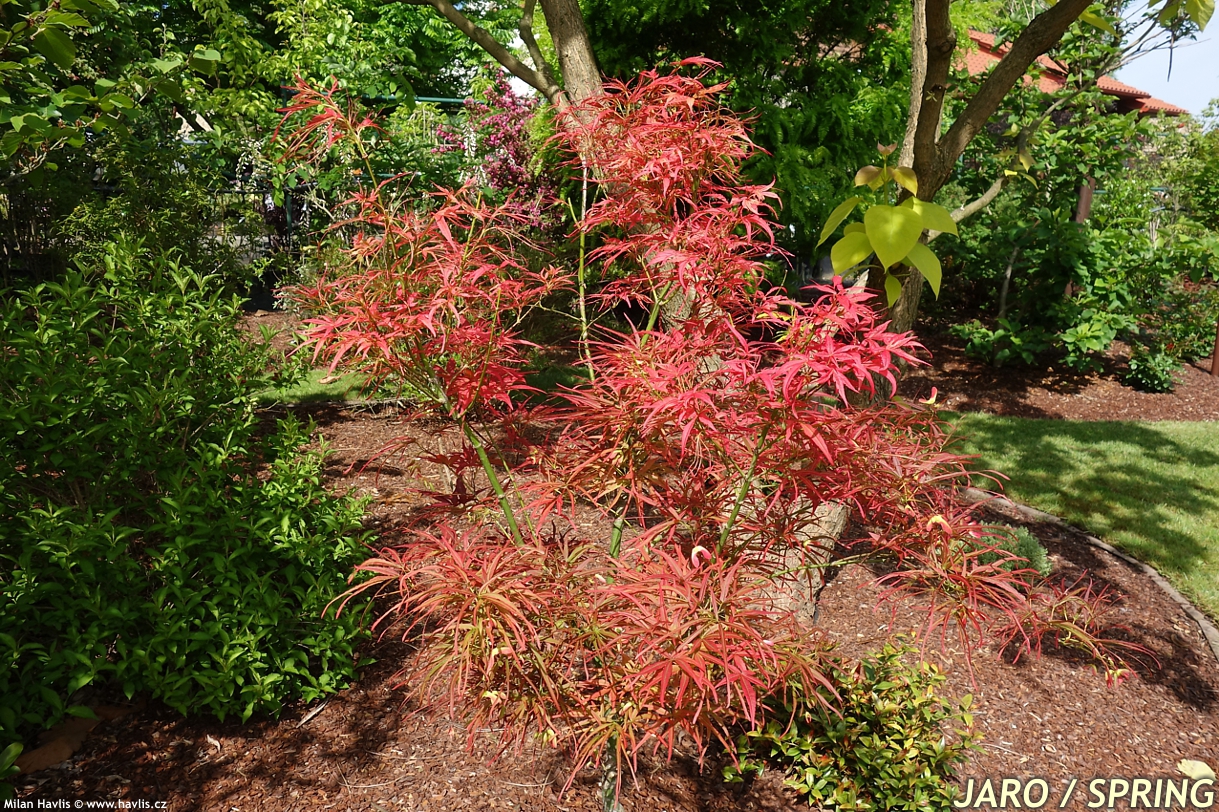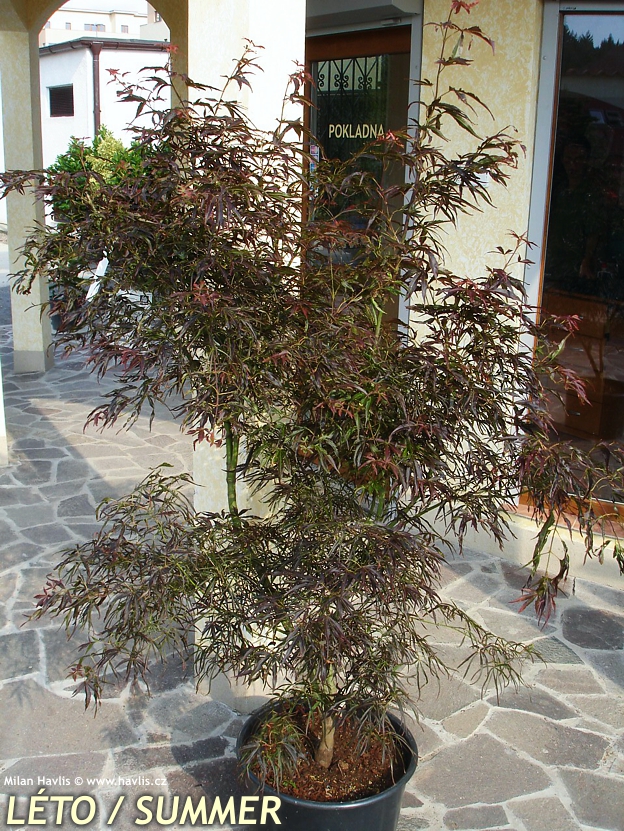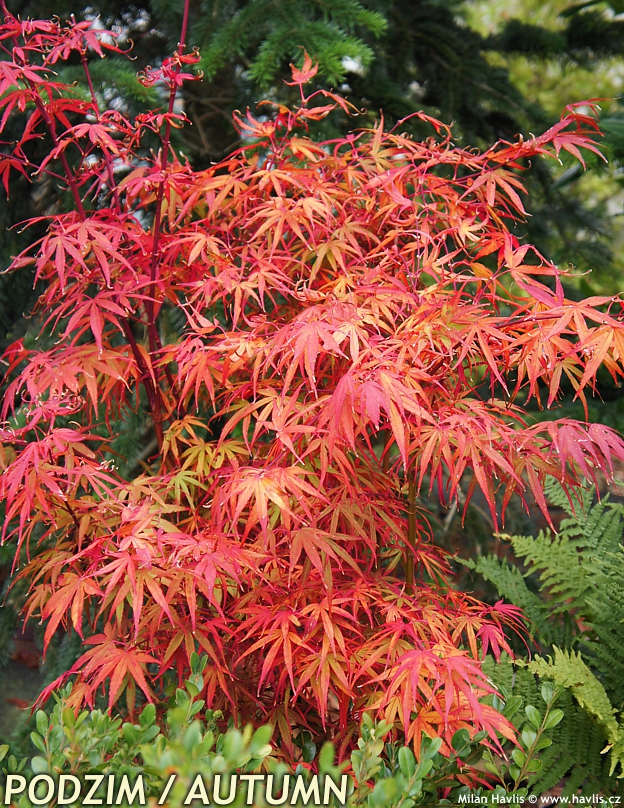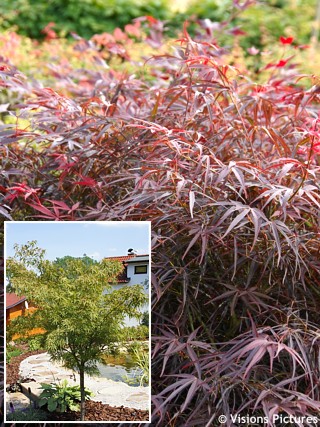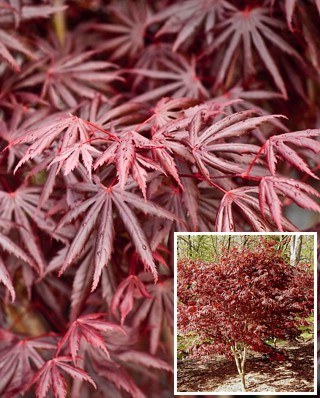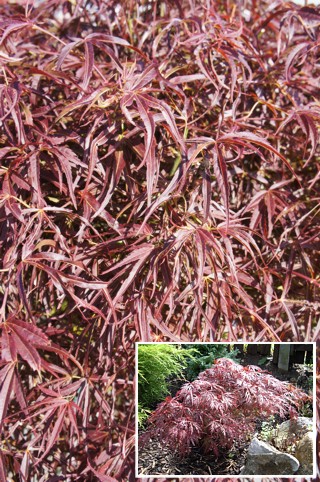Acer palmatum ('Linearilobum Atropurpureum') 'ATROLINEARE' Japanese maple
Acer
Japanese maples are very decorative and usually low shrubs, occasionally small trees, with attractive foliage and picturesque structure. There are many varieties in various shades of green, chartreuse, golden and yellow, red to maroon, and even multicoloured (variegated). They originate from Asia (Japan, China, Korea), where they have been cultivated for at least two centuries or perhaps even longer, however, they were introduced to Europe only at the beginning of the 19th century, specifically to Great Britain in 1820. Interestingly, the botanist Carl Peter Thunberg described them much earlier, in 1784, because he undertook an expedition to Japan in 1775-1776, discovering new species and collecting seeds and plants. He named the tree Acer palmatum, referring to the leaf shape resembling a human hand with fingers, although it is said that they first reminded him of frog fingers, which is also one of its oldest Japanese names: kaede. The other is momiji (baby hands). The beauty of the colours and shapes of the leaves and trees is reflected in many arts, for example, in the oldest preserved collection of Japanese poetry from the 8th century, the Man'yōshū (Collection of Ten Thousand Leaves). The Chinese poet Wang Wei (699-759) celebrated their beauty in many of his works, and naturally, maples often appeared in ancient paintings, tapestries, porcelain, and wherever classic and traditional decorations associated with the symbolism of these maples were desired: beauty and elegance, serenity, endurance, vitality, and transformation.
Sometimes plants have two names and we tend to choose the easier one to pronounce. That is not the case of this Japanese maple though. Its preferred name is Linearilobum as opposed to another accepted name Scolopendrifolium. Now pick one. On top of that, this variety has the epithet Atropurpureum so the complete name is Linearilobum Atropurpureum. So why don’t we just call it LA maple?
But seriously, however difficult the name may sound this is a rare and beautiful version of Japanese maple with very thin, deeply lobed, linear leaves. They are deciduous and emerge bright burgundy red and mature to almost black-red in full sun while inner leaves inside the shrub are rather green. The leaves show bright green veins and stalks which creates an unusual contrast. Autumn colour varies from orange to crimson red.
It grows slowly, about 10-15 cm per year, forming a small tree or a large shrub with irregular shape which is exactly what is required from Japanese maples. Every plant is unique and evokes an unusual atmosphere if you can find it the perfect position in a stylish garden.
For best colour grow this one in full sun with constantly moist soil that has to be well-drained, acidic to neutral, and medium fertile. Keep it mulched all year round. It will love a location with high air humidity, e.g. at a river bank or near a pond but it is not a must. Fully hardy to min. -27°C (USDA zone 5b).
Last update 18-01-2011












